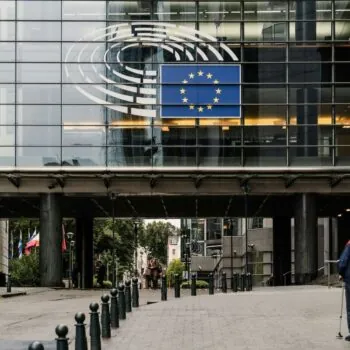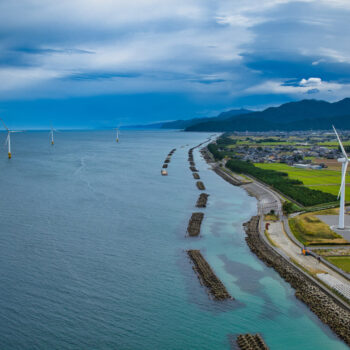Today the European Commission released its communication on the European Green Deal (EGD).
The Commission reset its commitment to tackle climate change and environmental-related challenges. Commission President Ursula von der Leyen and Executive Vice-President Frans Timmermans presented the challenge as “this generation’s defining task”. It is a bold agenda at the highest political level. This will be this Commission’s mission for the next five years.
Why now?
The new Commission has been in office for 11 days. This is the new leadership’s first major policy initiative. With the European Parliament majoring on climate policy – even competing on who is the greenest – President von der Leyen needed to act on climate. She was not the initial choice of the European Parliament and she knows this agenda will speak to MEPs. This is core to Ursula von der Leyen’s politics.
What is it?
The European Green Deal is a policy action plan. It lists actions the Commission intends to take in the next five years to put Europe on the path to climate neutrality by 2050.
The plan re-commits the European Commission to three fundamental pillars of climate action:
- Aligning policies with climate neutrality via the EU Climate Law, with a focus on resilience, the finance sector, trade and just transition
- Tightening up existing instruments (EU 2030 target, energy legislation)
- A carbon market, with an extension into new sectors
How good is it?
We set three benchmarks for the EGD:
1: Does the Commission give itself the tools to be a “geopolitical Commission”?
The tools are there but we still need a plan.
The European Commission is majoring on domestic reforms to decarbonise industry and promote the circular economy. This will be the EU’s growth model moving forward. This is a message of intent to the rest of the world.
The inclusion of a carbon adjustment mechanism is probably more for geopolitical reasons than for accelerating decarbonisation of industry. It is a powerful tool to engage other countries in the climate ambition discussion throughout 2020.
The section on climate diplomacy is encouraging: recognising the need for innovative forms of engagement, identifying the EU-China summits as a key moment and focusing on Africa.
The idea of “green deal diplomacy” focused on real-economy actors and developments is a move in the right direction.
Leading by example will however not be enough. The European Commission should also lead on outreach by building partnerships on climate resilience and the clean economy and replacing existing relationships when needed. Algeria for instance is exporting a lot of gas to Europe. The European Commission needs to engage now to build a new – clean – partnership to replace the existing fossil fuel-based one.
2: Does the Commission propose a whole-economy strategy?
The EGD is probably closer to a collection of policies then a strategy. These policies are individually ambitious: the climate law for instance provides grounds to put climate into the mainstream of all EU policy areas.
But is it enough to reach climate neutrality by 2050?
We already have a vision, namely in the form of the 2018 Communication ‘A clean planet for all’. But here again is a collection of pathways and scenarios. We probably need a plan now.For instance, how will the EU leverage the revision of its competition policy to create European ambassadors for new business models that encourage other countries to increase their climate goals? How will the phase out from unabated natural gas be managed as this is less of a problem of technology and more one of politics: coordinating the multitude of sectors embarking on different trajectories and redefining the EU’s geopolitical position vis-a-vis Russia and the US?
3: If the EGD is the EU’s new growth strategy, is it changing the fundamentals of the economy?
Where there is a will, there is a way.
The Commission identifies the need to revisit the EU’s competition policy and some of its macro-economic framework to align with the climate neutrality objective. A more ambitious adaptation strategy, as previously promised, could for example ensure a cost on climate inaction becomes a standard part of EU decision making.
This could have a profound impact on the way Europe’s economy works. There will be some major opposition to this however, notably from Germany, who will want to revise the Stability and Growth Pact.
What does it mean for the EU’s role in the world?
The EU 2030 climate target is a currency recognised and valued around the globe. At next year’s COP26 in Glasgow, a major moment in the climate-sphere, all parties are expected to raise their 2030 NDCs. These actions will define whether the Paris Agreement is working.
Ahead of COP26, the Commission will put forward their “impact assessed plan” for upgrading its 2030 target to 50-55% by the Summer of 2020. Hopefully the discussion at Heads of States level will start before the plan is available to be able to engage with China during the Leipzig Summit of September 2020. The EU will need a good understanding of what if possible or not by then to engage their Chinese counterparts.
What’s next?
The EGD is a strong set of policy measures, but it will face some complicated implementation challenges when it comes to legislative delivery. There will also be heavy “yes, but” lobbying from incumbent industries, as well as the usual political games from member states and parliamentary groups when agreements are sought. The focus now should be on how to avoid Europe’s new green ambition being killed off by the business-as-usual EU machine.


